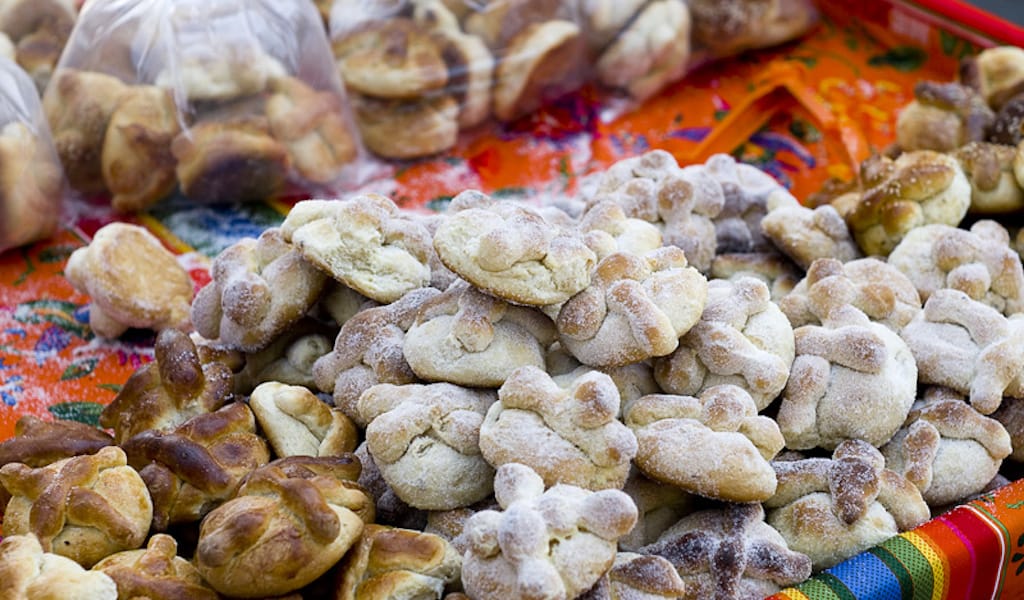Located between the Atlantic Ocean and the Bay of Biscay, in the northwest corner of the Iberian Peninsula, Galicia is a large, wild cape that almost looks like a gigantic hand stretching out into the sea, hemmed in by the beautiful estuaries of the Rías Baixas to the south and the Rías Altas to the north.
Given this location, the region has long been renowned as a fishing and agriculture center (although it’s best known internationally as the site of the Camino de Santiago, or the Way of Saint James, an ancient pilgrimage route). Over the past few centuries, however, Galicia has been also been characterized by the migration of a good portion of its population to more prosperous cities and countries. As a Galician who has lived in Barcelona since I was 18 years old, I’m a part of this mobile populace. Yet I always try to come back for Christmas (and not just for the amazing food).
The traditional Galician Nadal (Christmas) is built on Catholic beliefs: fish or seafood for the Noiteboa (Christmas Eve), to mark the vigil before the birth of Jesus, and meat for Nadal lunch.
Our Christmas Eve meal blends Galician and Catalan delicacies. For the aperitif, I often bring something from Barcelona, where the aperitif tradition is more established. What I find funny is that Catalan vermut is very frequently served with gourmet canned Galician seafood, which is consumed more on the eastern peninsula even though it’s produced in the west. So sometimes I bring home these conservas; my family is often surprised that canned razor clams can taste so good. “Of course they taste good, they are from las Rías,” I reply.
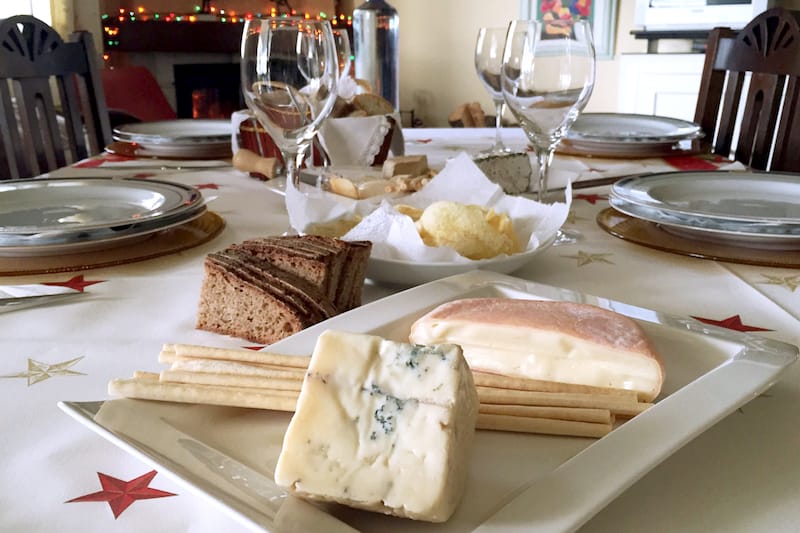
Recently, we’ve begun a new ritual of bringing different artisan raw-milk cheeses from Catalonia, Andalusia, Portugal and other European countries for the Christmas Eve aperitif. The focus changes each year – for example, this year we all brought different types of goat cheese.
The classic main dish for the second course of the vigil feast is salt cod (not unlike in Naples), which used to be fished off the Galician coast but is now imported from the North Sea. Once desalted, the cod is baked with boiled potatoes and cauliflower (local and in season), dressed all over with a tasty ajada, a sauce made by frying garlic in olive oil and then adding paprika. This formerly humble dish is more expensive and celebratory nowadays, since cod is no longer so abundant.
In many houses, including ours, other fish like turbot, monkfish or sea bream is substituted for the cod. In our case, we usually have merluza (hake), which satisfies all the different palates in the family, chopped in succulent slices, coated in batter, fried and served with very thin homemade potato chips.
For lunch the next day, the traditional main course is meat, sometimes lamb, but often a splendid chicken or, on very special occasions, a capón, a castrated rooster that was overfed during the last months of its life. This results in a higher concentration of fat in between the meat fibers, making it particularly tender and luscious.
The star of the Christmas meal in Galicia is served as a starter: local seafood.
In my family, we eat one of the chickens raised by my aunt Aurea and uncle Pepe. These birds are real champions – fed a combination of organic grains and vegetables, they spend time every day out in the sun and roaming free. We joke that these hardy chickens can eat your dinner and steal your car if you don’t eat them first. My aunt Aurea and my cousin Cristina, who is a professional cook, bake the chicken, working carefully to ensure the crispiness of the skin and the tenderness of the meat inside. They normally serve it with fried potatoes or – my favorite – boiled local chestnuts, the traditional companion to a proper Christmas Galician chicken or capon.
But the star of the Christmas meal in Galicia is served as a starter: local seafood. Similar to cod, seafood was abundant and affordable here until the mid-20th century. Moreover, it was right in our backyard; the Galician coastline was known across the world for producing some of the highest-quality seafood. It was even free for those who could fish it by themselves (my father still remembers with great morriña, nostalgia in Galician, the spider crabs walking out of the sink in his aunt’s kitchen, just caught in the morning by his uncle).
Nowadays, local seafood is over-fished, and prices reach astronomical heights during Christmas. As a result, locals empty their pockets at the fishmonger come Christmastime or buy in advance and freeze it for the holidays.
Even so, Galicians can hardly abandon this exquisite feast: centollas (spider crabs), percebes (a special kind of barnacle), buey de mar (brown crabs) or nécoras (velvet crabs) boiled in sea – or salted – water with an aromatic bay leaf; langoustines or shrimp grilled with garlic and parsley; wonderful clams stewed in different sauces; and, of course, the iconic vieiras.
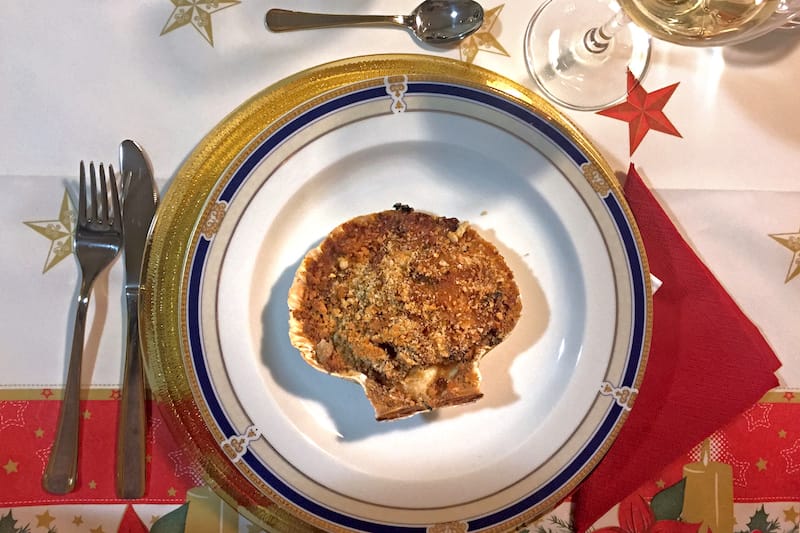
The Galician vieira (Pecten maximus, commonly known as the king scallop) is a traditional shellfish that also happens to be the symbol of the Way of Saint James path (along with the similar Pecten jacobaeus, which is caught in the Mediterranean). This succulent mollusk is traditionally baked in its shell, covered in a sofrito made of onion, chopped ham and tomato sauce, and then topped with a layer of breadcrumbs. The sofrito amplifies the tenderness of the scallop meat, which retains a slightly oceanic taste.
All this seafood is devoured gluttonously and washed down with bottles of our magnificent white wines like the Albariño from Rías Baixas, Ribeiro from La Ribeira Sacra or Godello from Valdeorras.
For the desserts, we head back to the eastern side of the Iberian Peninsula. Normally I bring turrón, a type of nougat, from specialty shops in Barcelona (very carefully, as our favorites like turrón de Alicante and guirlache are the hard – and brittle – kind of nougat). These sweets, made with excellent local ingredients such as Marcona almonds and rosemary honey, are the perfect way to end a Christmas meal that crosses the entire Iberian Peninsula, like a food bridge from coast to coast.
Editor’s note: To celebrate the festive season, we’ve asked our bureau chiefs to share a favorite holiday meal or culinary tradition, either past or present. Happy holidays!
 April 1, 2024 Pastiera
April 1, 2024 Pastiera
Like the Proustian madeleine, sweets can stir up all kinds of feelings in the minds of […] Posted in Naples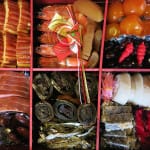 January 1, 2021 Osechi Ryori
January 1, 2021 Osechi Ryori
‘Tis the season of the Japanese New Year’s trinity: osechi, oseibo and nengajo. Like […] Posted in Tokyo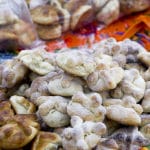 October 26, 2017 Día de los Muertos
October 26, 2017 Día de los Muertos
Día de los Muertos (Day of the Dead), or at least some variation of it, has been an […] Posted in Mexico City
Published on December 31, 2018
Related stories
April 1, 2024
NaplesLike the Proustian madeleine, sweets can stir up all kinds of feelings in the minds of those who eat them. In Naples, struffoli (small, round doughnuts glazed with honey) and cassata (sponge cake with ricotta and candied fruit) speak of Christmas, while chiacchiere (sugar-dusted fritters) and sanguinaccio (literally “blood pudding,” but actually made of chocolate)…
January 1, 2021
Tokyo‘Tis the season of the Japanese New Year’s trinity: osechi, oseibo and nengajo. Like newsy Christmas cards, the nengajo is a recap of family or personal news mailed in postcards during the weeks preceding the end of the year and efficiently delivered all over Japan promptly on January 1. The winter gift-giving season is in…
October 26, 2017
Mexico CityDía de los Muertos (Day of the Dead), or at least some variation of it, has been an annual celebration in Mexico for over 3,000 years. During the Aztec period, it took the form of a festival in August dedicated to Mictecacihuatl, otherwise known as the Lady of the Dead, who was the ruler of…















































